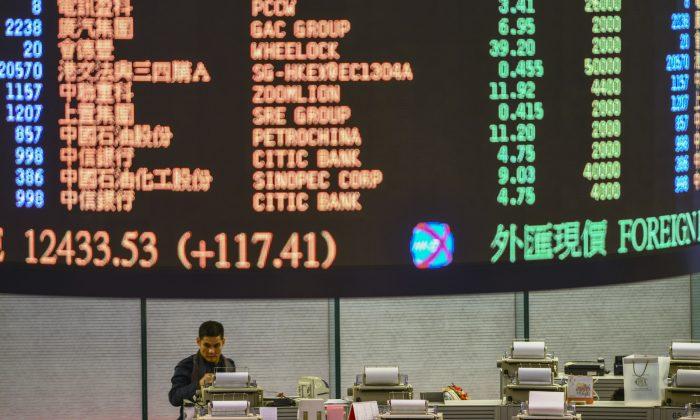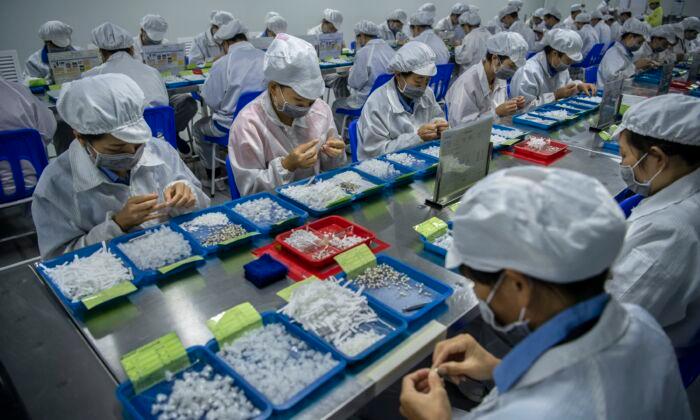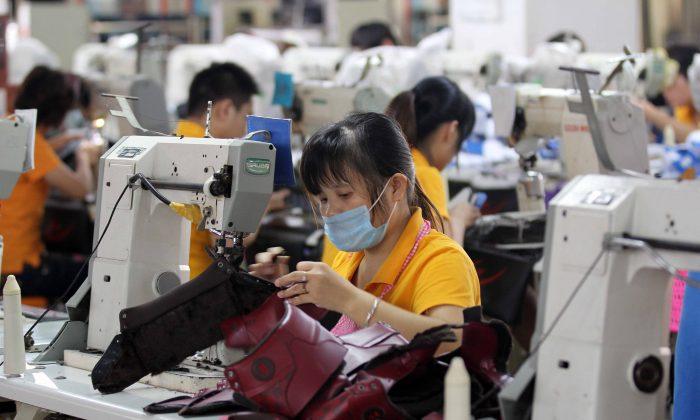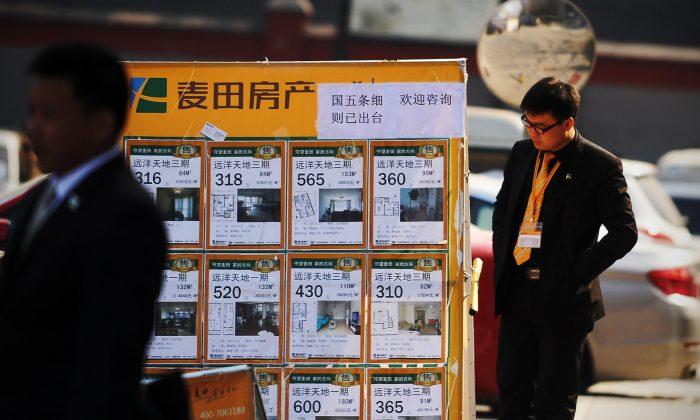News Analysis
On April 23, HSBC Holdings plc, a multinational banking and financial services organization, released China’s April manufacturing sector Purchasing Managers Index (PMI), which was 50.5, as well as April’s manufacturing output index, which was 51.1. Each index was lower than those of prior months.
On that day, the A share stock index, issued at the Shanghai Stock Exchange and priced in the local yuan currency, dropped 2.57 percent. This decline is considered below the psychological comfort zone, which is 2,200 points.
One doesn’t need to be a market expert to reason that the PMI index was not the only cause for the stock index to drop.
One week before the indexes were published, the Chinese regime’s Bureau of Statistics claimed that the 2013 first-quarter economic growth rate was 7.7 percent. This data is much lower than analysts had estimated.
Despite the decelerating growth, the first-quarter lending activities increased by 60 percent and money supply M2 (the total money supply in a country’s economy, including all types of cash, and money held in banks) increased by 15.8 percent. Both reached record high levels, according to an April 15 article by China’s National Business Daily.
Decelerating growth and increased lending activities are worrisome for many market analysts, because increasing loans does not stimulate economic growth.
An April 15 article on the Global Post website quoted Patrick Chovanec, chief strategist at Silvercrest Asset Management, saying: “Slowing first quarter 2013 GDP growth despite massive credit expansion, much of it off balance sheet, spells bad, bad news for the Chinese economy.”
Local Government and Corporate Debt Crisis
It should be noted that the communist regime is faced with a local debt crisis. Senior auditor Zhang Ke, president of accounting firm Shine Wing, and vice chairman of China’s accounting association, warned that the local government debt is “out of control” and could spark a bigger financial crisis than the U.S. housing market crash, according to an April 16 article in the Financial Times.
In addition, the corporate debt crisis is already beyond repair, suggesting that spending was far above revenues earned. Quoting JP Morgan Chase, an April 22 article in the China Securities Journal states that China’s enterprise debt has reached 110 to 120 percent of the Gross Domestic Product (GDP), far exceeding 90 percent, which could be construed as having reached a catastrophic level. Such debt trajectories are considered a risk to long-term growth and stability.
Resource-based industries and cyclical industries, such as shipbuilding, the photovoltaic industry and steel industry, are facing tough challenges.
The bad debt amassed in the steel industry has reached an unmanageable level. In March, 209 lawsuits were filed against steel traders by 23 Shanghai banks. Sinosteel’s Tianyuan Group announced Aug. 29, 2012, that steel products had disappeared from existing inventories, with five more companies reporting missing products during the past five months. Apparently, products valued at 1.3 billion yuan ($210 million), involving six publicly traded companies, have gone missing. Some banks specializing in steel trade lending could have lost tens of billions of yuan, according to an April 23 Sina article.
The debt crisis has also reached unmanageable levels in China’s photovoltaic industry. According to the state–controlled newspaper Xinhua, the Shangde Group in Wuxi City filed for bankruptcy, as it had defaulted on its debts on March 20. Statistics indicate that Shangde Group’s debt was 3.58 billion yuan ($580 million) or 81.8 percent of its assets by March.
An article on the Reason.com website quoted China’s Caijing Magazine, “China’s top 10 photovoltaic makers have accumulated a combined debt of $17.5 billion so far, leading the whole industry to the brink of bankruptcy, data from U.S. investment agency Maxim Group showed … LDK Solar, the world’s second-largest maker of solar wafers, and Suntech Power, the world’s largest solar panels producer, are the mostly likely to be headed for bankruptcy.
Market Experts Cynical
Deteriorating market fundamentals are the reason for well-known investors abandoning China.
Jim Chanos, known to be highly critical of China’s economic prowess, presented another unfavorable view of the country and its economic machinations during a presentation on China at the Wine Country Conference and the Les Turner ALS Foundation.
Another prominent analyst, George Soros, who gained his reputation during the southeast Asia economic crisis, made similar remarks to Chanos during the Boao Forum for Asia on April 8. Soros warned that China’s shadow banks, government-backed financing platforms, and real estate debt triggered an untenable debt crisis, which is mirroring the subprime mortgage risk that preceded the economic crisis in the United States. Soros predicted that a hard landing for the Chinese economy is in the making, according to the First Financial Daily.
Affirming Soros’ prediction is the regime’s official data, which shows 524.3 billion yuan ($85.05 billion) of bad debt held by China’s commercial banks at the end of March. That is an increase of 20.7 percent compared to the number in March 2012, according to the First Financial Daily.
Moreover, all three international credit rating agencies–Standard & Poor’s Rating Services (S&P), Fitch Ratings and Moody’s Investors Service–expressed their concerns regarding China’s economy.
S&P said that Beijing will have to bear the consequences of its economic stimulus policy.
Fitch downgraded China’s long-term local currency rating from AA- to A+. This is the first time a major ratings agency downgraded China’s rating.
Moody’s affirmed its Aa3 rating of the regime’s bonds, but lowered China’s outlook from positive to stable.
Translation by Sophia Fang. Research by Ariel Tian and Valentin Schmid. Written in English by Heide Malhotra.
Read the original Chinese article.




